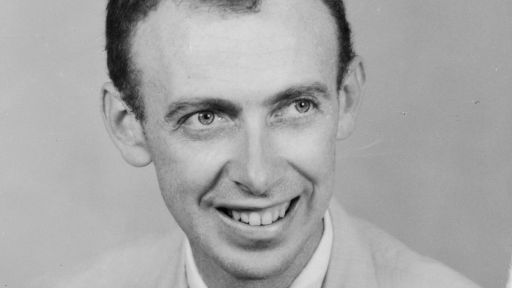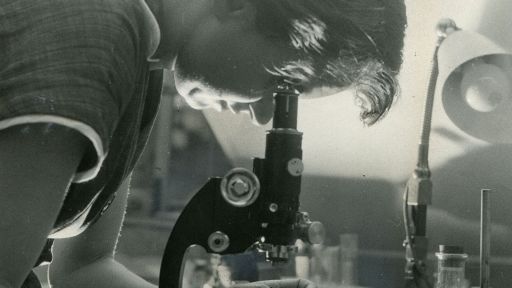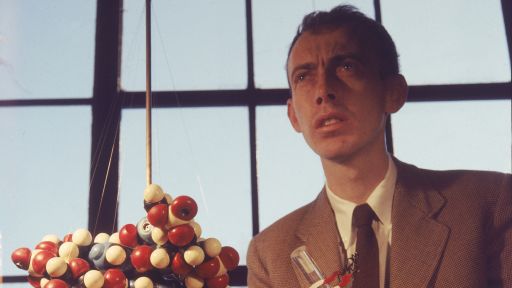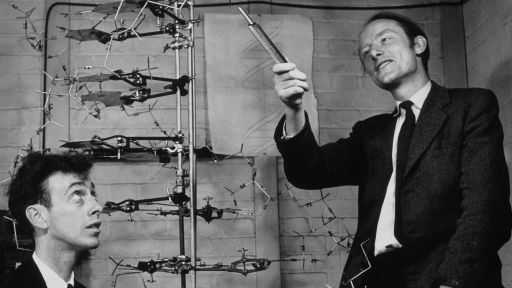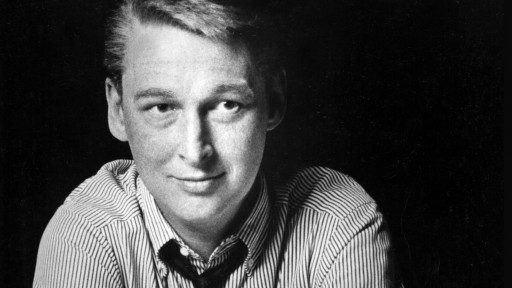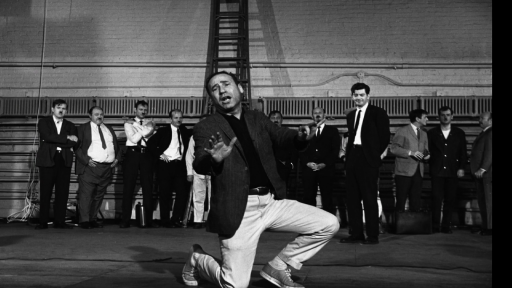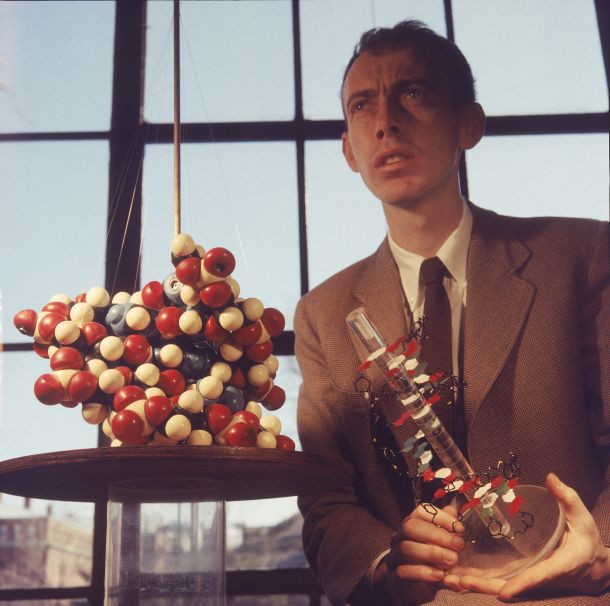
Pioneering American geneticist and biologist Dr. James D. Watson holds a model of DNA (the structure of which he co-discovered) as he sits by a window beside a table on which sits another molecular model, Cambridge, Massachusetts, 1957. (Photo by Andreas Feininger/The LIFE Picture Collection/Getty Images)
- April 6, 1928: James Watson is born in Chicago.
- In 1943, James Watson enters the University of Chicago at age 15. He’s convinced he wants to study ornithology, but after reading Erwin Schrödinger’s book “What is Life,” he switches his focus to genetics. He graduates in 1947 with a B.S. in Zoology.
- In 1950, James Watson completes his Ph.D. in Zoology at Indiana University. He then moves to Copenhagen, and spends a year studying viruses.
- In May 1951, James Watson attends a symposium in Naples where he meets Maurice Wilkins, a British physicist who is working on DNA. Watson attends a talk by Wilkins, where he sees an x-ray image of DNA for the first time.
- In September 1951, James Watson moves to Cambridge University and begins working in the Cavendish Laboratory under Max Perutz. He meets Francis Crick, with whom he forms an immediate bond. Over the next two years, they gather clues and build models to try and elucidate the structure of DNA, life’s building blocks.
- February 28, 1953: James Watson and Francis Crick discover DNA’s structure, the double helix, made up of four chemical bases that unzip and replicate to form identical new strands of genetic material. Watson is only 25 years old. A key piece of data that lead to Watson and Crick’s discovery was one of X-ray crystallographer Rosalind Franklin’s photographs of DNA. Franklin’s colleague Maurice Wilkins showed Watson the photograph without her permission.
- In 1956, James Watson accepts a position in the biology department at Harvard University, and creates a thriving molecular biology department. His influential textbook “Molecular Biology of the Gene” revolutionizes the writing style of future science textbooks.
- April 16, 1958: Rosalind Franklin dies from cancer at the age of 37.
- In 1961, James Watson becomes a full professor of the Harvard biology department. His former students describe him as a highly competitive, eccentric mentor. He remains on the faculty until 1976.
- In 1962, James Watson, Francis Crick and Maurice Wilkins receive the Nobel Prize for Physiology or Medicine. Watson and Crick share the prize with Wilkins in recognition of his initial work on X-ray diffraction, as well as his follow-up work in verifying the double helix model they proposed. Rosalind Franklin does not receive a posthumous prize. Nobel Prize rules prohibit splitting prizes more than three ways.
- February 1968: James Watson becomes director of the Cold Spring Harbor Laboratory in Long Island, New York. Under his leadership the lab becomes a world leader in cancer research.
- March 1968: James Watson marries Elizabeth Lewis, a medical student working in his Harvard office. 2018 marks the couple’s 50th wedding anniversary. Their son Rufus is born in 1970; their son Duncan is born in 1972.
- In 1977, James Watson receives the Presidential Medal of Freedom from President Gerald Ford.
- May 1986: James Watson brings together the world’s leading geneticists to discuss the possibility of mapping the human genome. However, Watson misses the seminal meeting to be with his son Rufus, who is experiencing symptoms of psychosis related to his schizophrenia. Watson says his passion for the Human Genome Project was largely inspired by his family and need to understand the genetic basis of mental illness.
- In 1989, the National Center for Human Genome Research (NCHGR) is established to carry out the National Institutes of Health’s (NIH) component of the Human Genome Project. James Watson is appointed as NCHGR’s first director.
- In the early 1990s, James Watson gets into a public spat with his boss, Bernadine Healy, director of NIH. Healy is in favor of patenting genes. Watson is opposed to patenting genes, arguing that the information being generated by the Human Genome Project should belong to everyone.
- In 1992, James Watson resigns as director of the National Center for Human Genome Research.
- In 2003, the Human Genome Project is successfully completed, determining the sequence of billions of DNA fragments that are the recipe for humankind.
- In June 2007, James Watson becomes the first person to have his genome fully sequenced for less than $1 million. He publishes the results online for free with the hope of encouraging future discoveries.
- In October 2007, James Watson’s remarks about race and intelligence in The Sunday Times Magazine cause an international uproar. As a result, he is suspended as Chancellor of Cold Spring Harbor Laboratory.
- In 2014, James Watson auctions his Nobel Prize for $4.1 million. It is purchased by Russian billionaire Alisher Usmanov who returns the medal to Watson.
- April 6, 2018: James Watson celebrates his 90th birthday at Cold Spring Habor Laboratory, where he works as Chancellor Emeritus.

